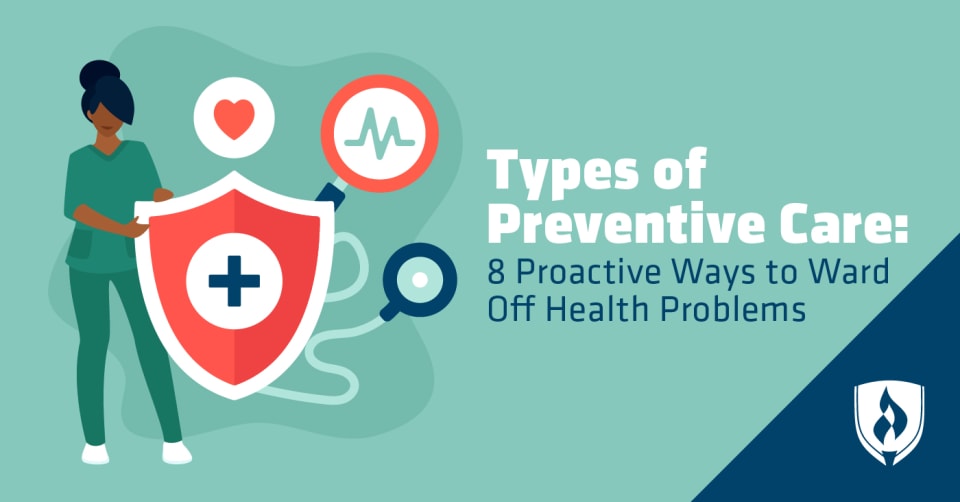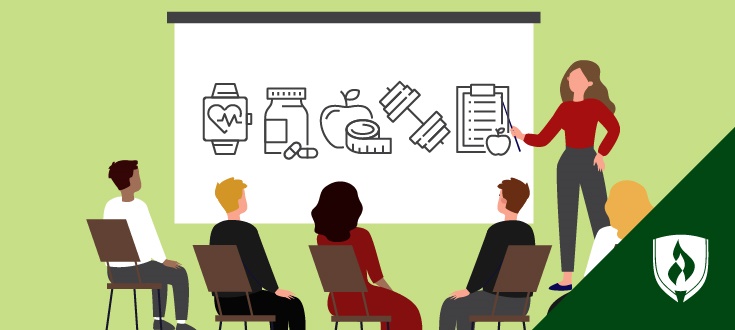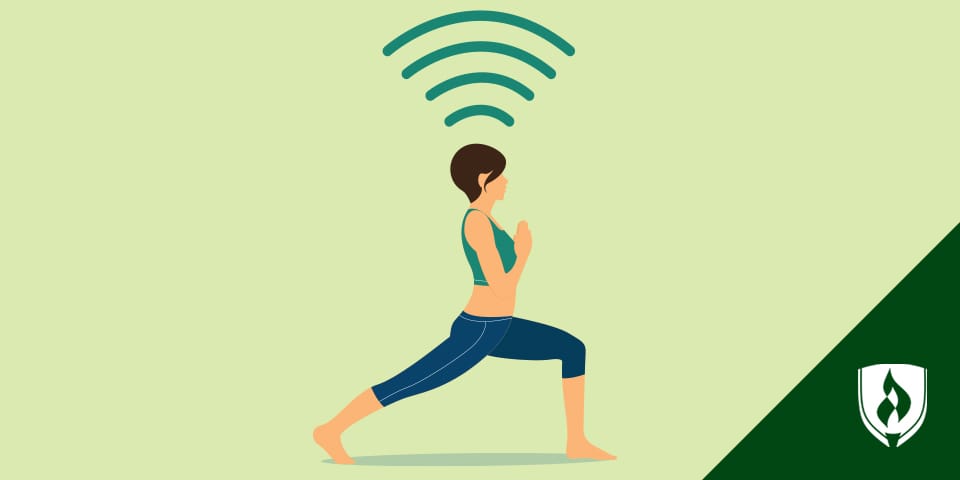Types of Preventive Care: 8 Proactive Ways to Ward Off Health Problems
By Anjali Stenquist on 01/20/2020

One troubling fact about healthcare in America is that many people receive the majority of their care in an emergency room. For a variety of social, financial and environmental reasons, large portions of our population put off receiving medical care until their health is in crisis. Often, these emergency visits could have been prevented with early interventions, vaccinations or other forms of preventive care.
As the saying goes, “An ounce of prevention is worth a pound of cure”—and that’s certainly true here. Preventive care has been shown to be one of the most effective ways to reduce disease and lower the financial burden of medical care. In the last decade, healthcare reforms have made many forms of preventive care more accessible. Unfortunately, education around preventive health is still fairly limited and few of us regularly take advantage of available care. Health disparities continue to grow and families suffer losses that could have been prevented.
What are the best tools for promoting better health and limiting the devastating consequences of disease and disability on a community? We identified 8 common tactics health professionals are using to keep crisis-level healthcare visits in check.
What is preventive care?
Preventive care is any medical service that reduces the risk of later negative health outcomes such as medical emergencies, disability or chronic disease. Preventive care often involves regular screening for diseases before they become serious enough to exhibit symptoms. When risk factors or signs of a disease are identified early, the cost of treating them is significantly reduced and they are less likely to develop into life threatening conditions.
Screenings are not medical interventions by themselves, but allow physicians to employ other specific preventive care services to reduce the risk of the development of a disease, such as assistance with lifestyle changes or medications. If a screening reveals the early stages of an illness, physicians often have more success with treatment and reduce the risk of a patient requiring emergency services or fatalities related to the illness.
What impact does preventive care really have?
In 2010, a study published in Health Affairs found that if 90 percent of preventive care services were used in 2006, $3.7 billion dollars could have been saved.1 As you can see, preventive care has significant economic benefit and can greatly reduce an individual’s financial burden associated with emergency health services.
The same study found that if preventive care had been widely delivered in previous years, two million more people would have been alive in the U.S. in 2006.1 Preventive care is a proven, cost effective way to help people live longer, healthier lives.
8 Preventive care examples
The U.S. Preventive Services Task Force (USPSTF) published a list of 102 recommendations for preventive care practices with evidence based results.2 Many of these practices are relevant to specific age groups, or individuals with particular risk factors in their medical history. Using the USPSTF and information from the U.S. Department of Health & Human Services we identified the following 8 services as some of the most impactful and universal preventive care measures.3
1. Blood pressure tests
Blood pressure tests are one of the most important screening methods to identify risk factors for serious disease in adults. The USPTF recommends screening for abnormal blood pressure every 3 to 5 years for most adults, and annually for adults over the age of 40.2 Testing for high blood pressure can reduce incidents of strokes, heart failure and coronary heart disease events. Screenings for low blood pressure can lead to a reduction in cerebrovascular events, heart failure and overall mortality.
2. Diabetes screening
According to the Centers for Disease Control and Prevention (CDC), more than 100 million Americans have diabetes or prediabetes.4 Diabetes contributes to heart disease, strokes, nerve and kidney disease, and vision loss. In 2015, diabetes was the seventh leading cause of death in the United States. Many people living with diabetes (about 25 percent) do not know they have the condition.4 With a proper diagnosis or the detection of prediabetes, people can receive treatment as minimally invasive as lifestyle changes in diet and physical activity.
Diabetes is over-represented in many communities of color such as American Indians, African Americans and Latinos. With better access to early diabetes screenings, health disparities and mortality rates for many communities could be significantly reduced.
3. Cholesterol tests
Regular cholesterol tests every 4 to 6 years can reduce the risk of cardiovascular disease.2 Cardiovascular disease can lead to heart attacks or strokes, but when indications of cardiovascular disease are detected early, it can be prevented with medication or increased physical activity. Adults with common risk factors such as diabetes, hypertension, smoking or a family history of high cholesterol, are advised to get their cholesterol checked more often.
4. Routine vaccinations
Childhood vaccinations protect against serious diseases such as polio or hepatitis, but adult vaccinations are equally important. An annual flu vaccine and “TDaP” shots (preventing tetanus, diphtheria, and whooping cough) every ten years for most adults and once during every pregnancy can significantly impact health outcomes in adults.
5. Cancer screenings
Mammograms and colonoscopies are among the most common cancer screenings. According to the U.S. Department of Health and Human Services, 1 in 8 women in the United States will get breast cancer during their lifetime.5 Mammograms take roughly 20 minutes and can detect breast cancer before it spreads to other parts of the body where it may be more difficult to treat. If detected and treated early, most women will survive breast cancer.
Colonoscopies can detect early signs of colorectal cancer. Like breast cancer, successful treatment of colorectal cancer can often depend on early detection of the disease. Colonoscopies are not the only way to screen for colorectal cancer, depending on a person’s risk factors other tests such as a stool test or a CT colonography might be more appropriate.
6. STI screenings
Many people living with sexually transmitted infections (STIs) do not experience symptoms and live with an illness, even spreading it to others, without knowing. The CDC states that for sexually active people, STI screenings can be one of the most important ways to protect good health.6
Despite the fact that STIs are common and treatable, social stigma can influence a person’s decision to take an STI screening. However, undetected and untreated, STIs can lead to poor health outcomes including loss of fertility and serious illness. The CDC recommends that sexually active people take an STI test anywhere from every three months to once a year depending on risk factors.6
7. Well-child visits
Children from birth to age 21 can reduce the risk of serious illness and disability with an annual well-baby and well-child visit. These visits allow physicians to administer necessary vaccinations, screen for potential medical issues, and provide insight on lifestyle changes that could reduce the later development of disease.
8. Mental health screenings
Though it is difficult to accurately assess the number of people worldwide who suffer from a mental illness or disorder, the World Health Organization estimates this figure to be in the hundreds of millions.7
While it’s true many of those who are afflicted may be dealing with relatively milder symptoms, untreated mental illness can have devastating consequences for individuals and communities. Depression and anxiety are some of the leading mental health issues in the United States, but if detected, these conditions can be effectively treated with medication, counseling or a combination of both.
Interested in connecting communities to preventive care?
Preventive care is a powerful, cost effective form of healthcare. However, many people and communities are unable to utilize preventive care services. Community health workers promote better health outcomes through advocacy, education, and direct outreach with members of under-served communities around issues of preventive healthcare. If connecting people with preventive care sounds like an interesting calling, learn more about the role with our articles, “What Is a Community Health Worker? A Closer Look at this Rewarding Role.” and "What Can You Do With a Health & Wellness Degree?"
Related Articles:
1Health Affairs, Greater Use of Preventive Services in U.S. Health Care Could Save Lives at Little or No Cost, [accessed December, 2019] https://www.healthaffairs.org/doi/full/10.1377/hlthaff.2008.0701
2U.S. Preventive Services Taskforce, Recommendations for Primary Care Practice - Published Recommendations, [accessed December, 2019] https://www.uspreventiveservicestaskforce.org/BrowseRec/Index/browse-recommendations
3U.S. Department of Health and Human Services, About the ACA – Preventive Care, [accessed December, 2019] https://www.hhs.gov/healthcare/about-the-aca/preventive-care/index.html
4Centers for Disease Control and Prevention, U.S. Department of Health and Human Services, New CDC Report: More than 100 million Americans have diabetes or prediabetes [accessed December, 2019] https://www.cdc.gov/media/releases/2017/p0718-diabetes-report.html
5Office of Disease Prevention and Health Promotion, U.S. Department of Health and Human Services, Get Tested for Breast Cancer – The Basics [accessed December, 2019] https://healthfinder.gov/HealthTopics/Category/doctor-visits/screening-tests/get-tested-for-breast-cancer
6Centers for Disease Control and Prevention, U.S. Department of Health and Human Services, Sexually Transmitted Diseases – Prevention, [accessed December, 2019] https://www.cdc.gov/std/prevention/screeningreccs.htm
7World Health Organization, Fact Sheets: Mental Disorders , [accessed December, 2019] https://www.who.int/news-room/fact-sheets/detail/mental-disorders




